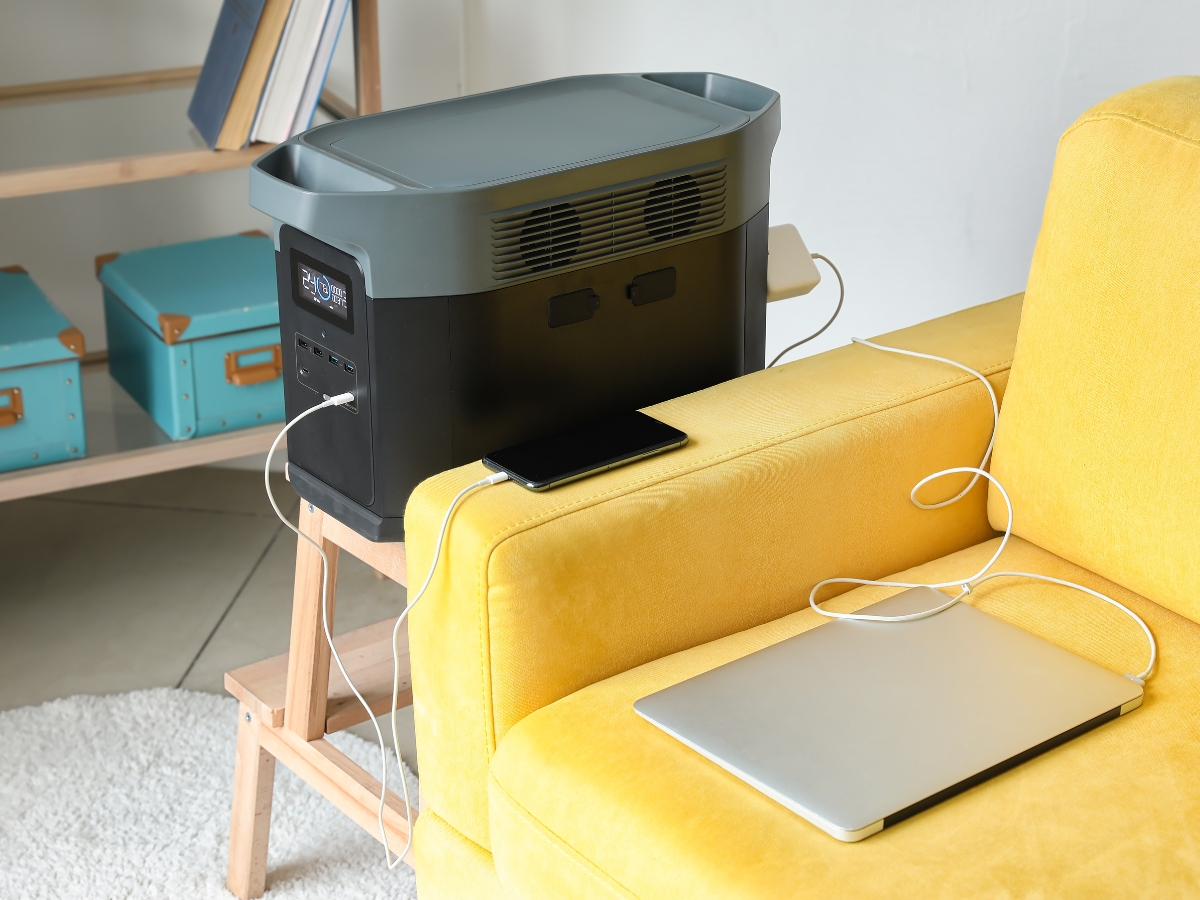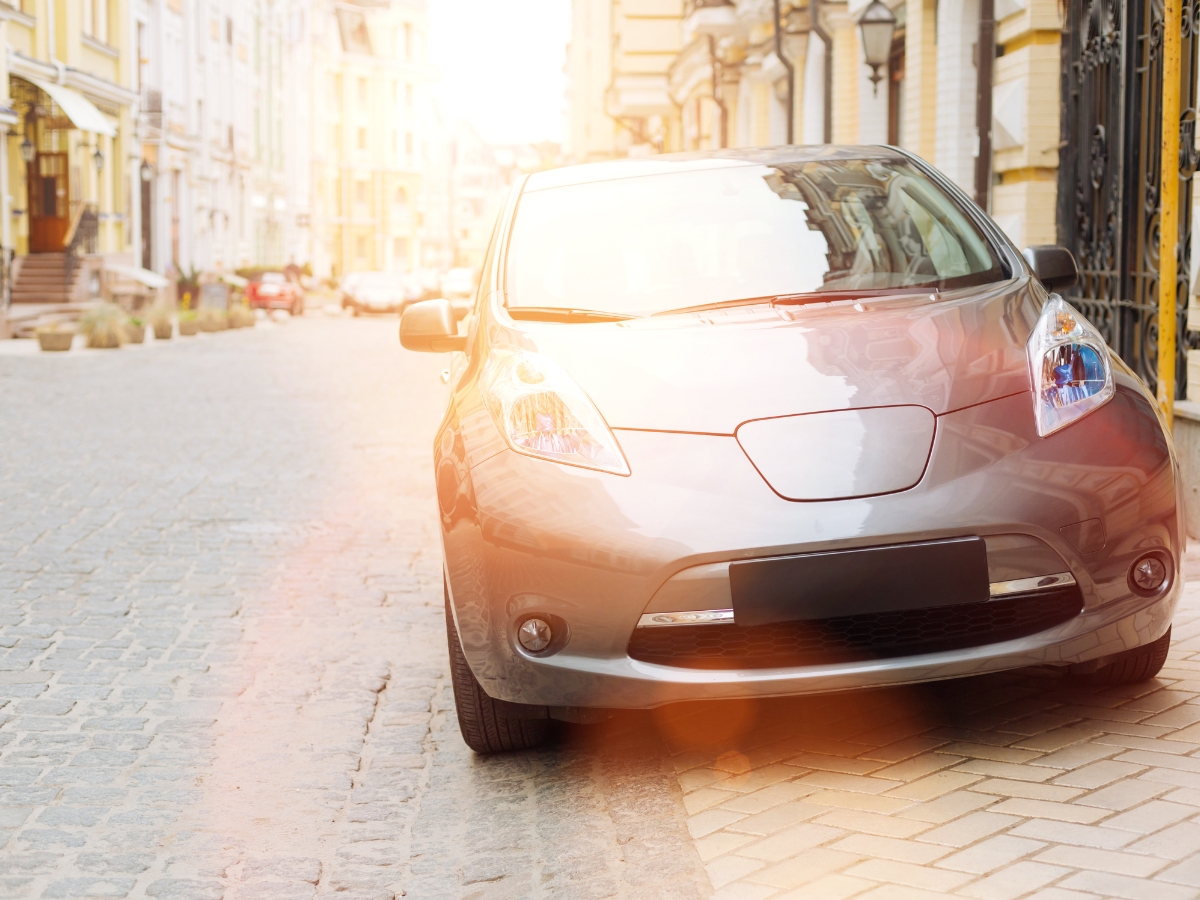The modern commercial wind turbine is a feat of engineering. Like a small, domestic wind turbine, the primary function is to produce electricity. Unlike a home turbine, a big commercial unit can produce enough electricity to power over 1000 homes.
How they do it efficiently and safely takes a lot of technology that you would not expect.
- Commercial wind turbines are huge.
- Wind turbines stop … Usually on purpose.
- A wind turbine does not always face directly into the wind.
- Wind turbines spin at different speeds.
It is visually apparent that wind turbines behave differently from time to time. One day it spins fast. One day it is facing the wrong way.
Another day it does not spin at all. What is up with wind turbines? There is a lot more going on up on that tower than a propeller spinning a generator.
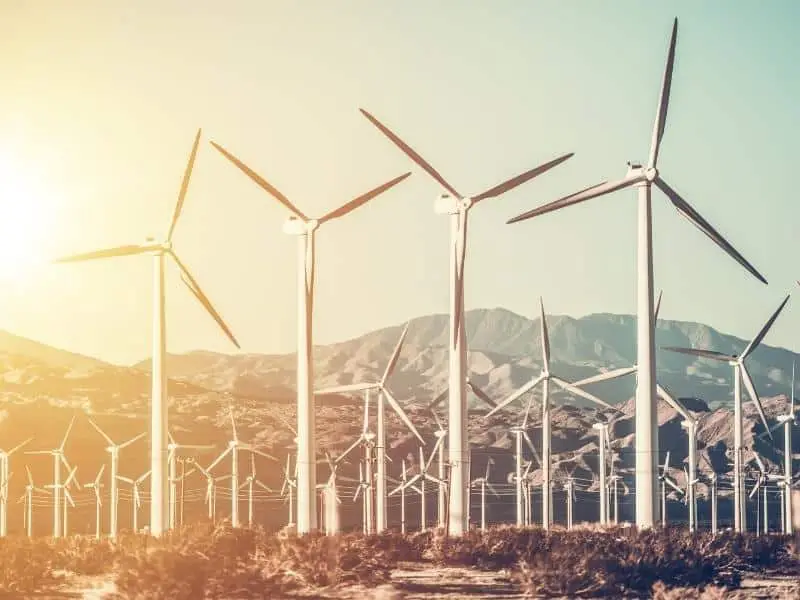
How Big Are Wind Turbines?
An average land base commercial wind turbine tower stands about 270 feet tall. The blades are over 200 feet long. That makes a total height of nearly 500 feet to the upper tip of the blade assembly.
The nacelle, at the top of the tower, can be up to 50 feet long and weigh 300 tons. The concrete platform required to support the tower can be 40 feet in diameter and over ten feet thick. Off-Shore turbines are even larger.
Why Turbine Structures Are So Big?
- Wind is more prevalent at higher elevations.
- Longer blades capture more wind power.
- The nacelle houses all the generating and control equipment.
Years of development have shown that larger turbines are more effective, though not any more efficient. There are worldwide programs to develop even larger turbines.
The idea is that fewer large turbines will provide the same amount of power as several small units.
Understanding the inner workings of turbines will help us all be more accepting of the new technology.
Towers
The wind at 200 feet elevation is more persistent than at ground level. The higher the blades of the turbine are positioned, the more power the unit will produce.
To reach the required height, 10 to 15-foot diameter tubular steel towers are erected. The tower houses all the wiring the system requires to provide a constant supply of grid power.
There is also wiring to return power produced back to the grid. It also houses a metal ladder that enables crews to access the nacelle of the turbine.
Tower Fun Facts
- Land based towers currently reach 300 feet.
- Off Shore towers are projected to reach 500 feet by 2035.
- Tower base diameter is often limited by transportation issues.
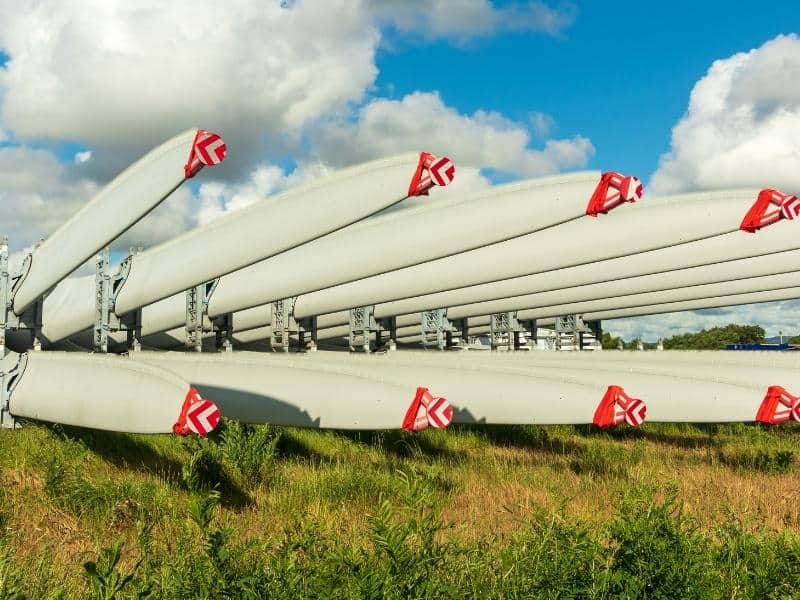
Blades
Gigantic turning blades are what most of us picture when we think of wind turbines. Today’s average ground-based turbines have blades near 200 feet in length. Blades are made of fiberglass and epoxy resin.
Such blades weigh in excess of 25,000 pounds each. The blade assembly, including the hub, can exceed 100,000 pounds. In a 20 mph wind, typical ground-based turbines rotate at 20 rpm.
While that does not sound fast, the tips of the blades are moving at over 100 mph.
More facts about blades.
- Largest off-shore turbine blades are up to 350 feet long.
- Blades can rotate within the hub to reduce torque.
- The tips of largest blades can reach 180 mph.
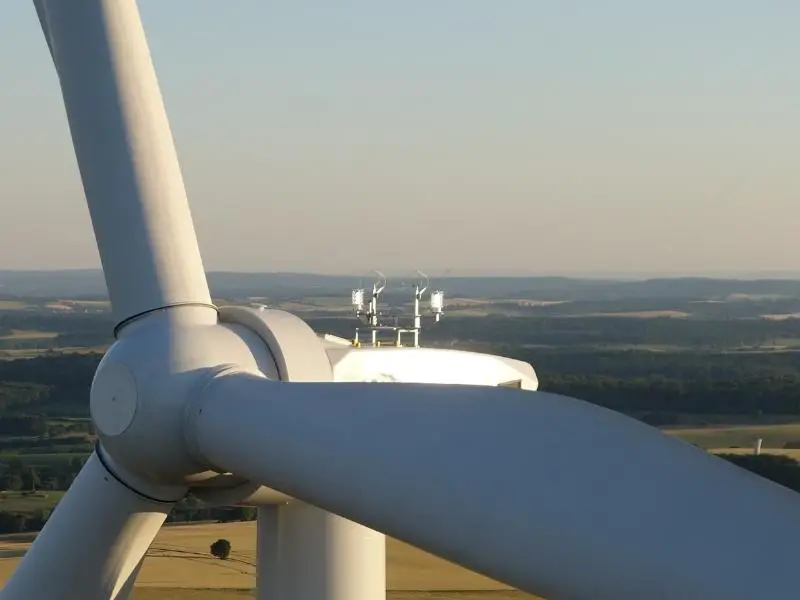
Nacelle
The nacelle is the heart of the wind turbine. The little house on top of the tower, which is actually over 40 feet long and 10 feet wide, attaches the main drive shaft to a gearbox and power generator.
It also houses the furling motors which aim the turbine. The propeller hub, which attaches the blades to the drive shaft, houses the feathering motors.
These motors can rotate the blades to increase or decrease the pitch angle of the blades. This, in turn, increases or decreases the force of the wind on the blade assembly.
Devices housed within wind turbine nacelle.
- Main Gearbox.
- High and low-speed drive shafts.
- Generator.
- Furling (Yaw) and blade pitch control motors.
- Mechanical braking system.
- Computerized monitoring and control systems.
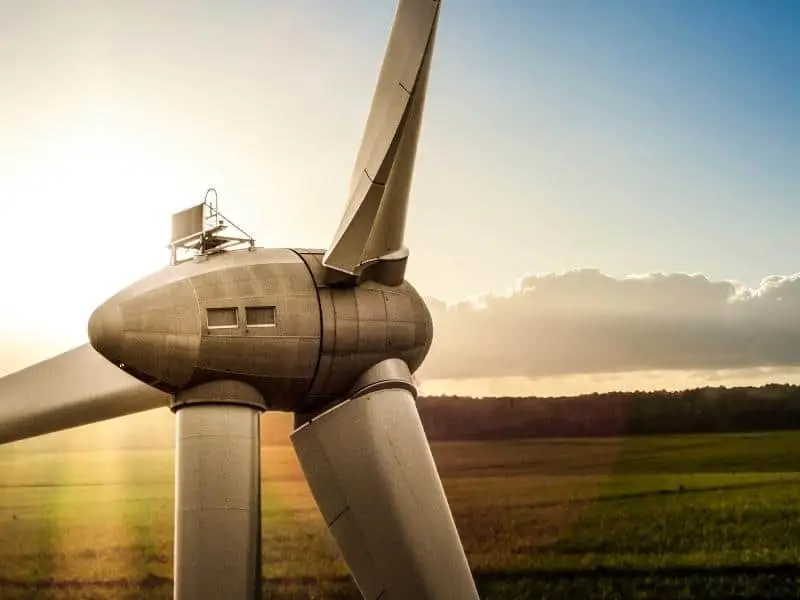
Why They Need To Be Big – The Technology
Wind turbine technology is advancing quickly. Every brand and generation of turbine has different technologies applied to it. But, they all work generally the same.
As the wind blows, the linear kinetic energy in the wind is converted to rotational energy by the turbine blades. This energy turns the low-speed shaft of the turbine.
As the shaft rotates, a gearbox in the nacelle takes the immense torque generated and converts it to speed. The high-speed shaft drives the generator to produce electricity.
Basic wind turbine operation.
- Start Up wind speed around 10 mph.
- Ideal operating speed is 20 to 30 mph.
- Typical blade rotation is 10 to 15 rpm.
- Generator speeds range from 1000 to 1800 rpm.
But Wait ! There’s More!
When we see a wind turbine that is not turning or is aimed out of the wind it does not mean the unit is broken down. There are a few reasons turbines are slowed or stopped.
Wind Speed
If wind speed is too low to produce power, the blades of the unit may be feathered parallel to the wind to reduce or stop unnecessary rotation.
When the wind reaches a good power production speed, the blade will be rotated into a pitch angle to create rotation. If wind speed gets too high the furling motors may turn the entire turbine out of the face of the wind to reduce speed.
Blades may also be rotated to reduce wind force on the turbine. In extreme cases, electronic and/or mechanical braking may be engaged to further slow the rotation.
No Demand
The electric grid is in a constant state of flux. Demand rises and falls continually, and often without warning. Conventional power plants are still the basis of power production in the US.
These plants run continually and are difficult to shut down. Wind turbines are still a supplemental power source that can easily be shut down.
Often, when turbines are not turning, or are turning slowly, it is simply because there is no demand for their power. They have been shut down to save wear and tear.
Maintenance
When maintenance crews need to work on any part of the turbine blade rotation will be stopped. Furling, pitch control, and mechanical braking will be employed to ensure the blades do not turn.
When crews have exited the tower, systems will be slowly returned to operational parameters and the blades will begin to turn.
Resources

